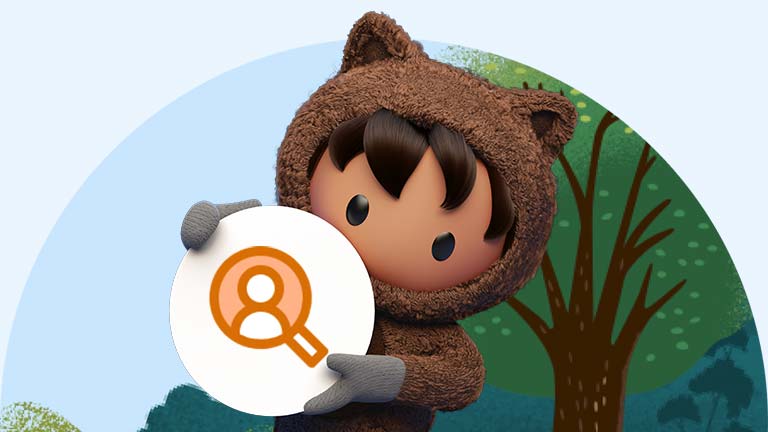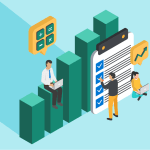The goal of marketers is to make every moment count, but doing that at scale can be challenging. That’s why artificial intelligence is such a catalyst. Companies that use AI in marketing can speed and scale up existing activities. A significant 62% of respondents surveyed for our State of Marketing report are already using it. But 91% of CMOs feel under pressure to continually innovate to stay ahead of the game.
So, how can you tap into the latest innovations around AI to connect with customers and hone your competitive edge? Eighty-six percent of the IT leaders we surveyed believe generative AI will play a big role in their organisations in the near future. When you combine it with predictive AI, you can optimise every step of your campaigns. For example, 19% of respondents use it to quickly segment leads. You can also automate manual processes, create new assets, and target specific segments more accurately.
Before we look at the role of AI in marketing, here’s what you need to know about the different types of AI and some common acronyms you’ll see:
- AI simulates human intelligence by processing data with algorithms and pattern detection.
- Machine learning (ML) analyses data to identify trends, make predictions, and automate decision-making.
- Predictive AI, such as ML, analyses patterns and gets smarter the more you use it. It’s great at working out what and when someone might want to see, read, or buy based on historical, real-time, and behavioural data.
- Generative AI automates creative tasks such as writing and image generation. You can prompt it using everyday language (or natural language processing — NLP) to create marketing copy, realistic or abstract images, and even virtual sets for videos.
AI has changed marketing forever – 62% of marketers have a fully defined AI strategy, up from 57% in 2020. There are all kinds of exciting tools available to help speed up your AI strategy. Broadly speaking, they fall into four categories: tools for segmentation, orchestration, personalisation, and insights.
AI Strategy Guide
Need a step-by-step guide on how to get started with AI? Read more to learn how to make Data + AI + CRM your trusted formula.



Common tools for AI in marketing and how to use them
The most effective way to use AI in marketing is to enhance everything you’re already doing and use it to assist your team. Focus on creating the best customer experience to increase conversion, retention, and loyalty. And always keep a human in the loop to review anything you create with generative AI.
When you’re evaluating tools on the market, consider if you prefer standalone solutions or AI capabilities you can integrate with your existing system. In most cases, you’ll probably prefer an integrated solution because you’ll be able to tap into your data and give your team complete visibility.
How to use AI for segmentation and targeting
Segmentation is key for precision marketing. Identify distinct groups with shared traits, behaviour, and preferences, and deepen your understanding of them to tailor strategies. AI can enhance campaign effectiveness by quickly scoring leads and accurately segmenting your audience based on various criteria such as geography, demographics, purchase history, and more.
When you’re segmenting leads, it’s important to balance granularity with simplicity. If your target groups are too broad, your content might not be as relevant to certain segments of your audience. Conversely, if you have too many segments, managing your campaigns can become complex.
Data Cloud has two tools to help here. Real-time segmentation, which helps identify groups you can target to make the biggest impact and the lookalike feature. This generates lookalike audiences based on existing insights. In other words, an audience of people who share traits with your existing customers and are therefore more likely to convert.
You can also use AI to target specific groups or people with messaging or ads as they browse your website. It analyses the data available on that visitor — such as CRM data, order history, or behaviour — and makes split-second decisions on the type of ads to serve them. This type of predictive AI can maximise ROI and is available as an add-on or embedded into some marketing and advertising solutions.
How to improve orchestration with AI
AI makes processes more efficient. Use it to synchronise, automate, and optimise complex processes and workflows while maintaining consistency across touchpoints. There are lots of ways you can use AI to improve orchestration:
- AI-powered chatbots on your marketing website or at the checkout can assist in closing sales by providing additional product information. They can also recommend relevant items based on customer preferences and data.
- Virtual assistants can take notes during marketing meetings, schedule calls, and generally increase efficiency.
- Tools like Send Time Optimisation and Einstein Engagement Frequency eliminate the need for guesswork when scheduling emails. They determine the optimal timing and volume of emails to send.
- With machine learning, you can go beyond automating simple sequential processes, like sending welcome emails. It allows you to extract more information from customer communications and automate more complex decisions.
- You can improve SEO by prompting your AI to suggest related searches based on keywords.
- AB testing is more effective if you use predictive AI to suggest which option is likely to convert — great for your call-to-action, subject lines, and landing page layouts. You can also retarget customers and use machine learning to uncover which approaches work best for that individual.
Then there’s generative AI, such as Marketing AI. This streamlines content creation by generating marketing copy in just a few clicks. Instead of writing copy from scratch, your team can review, edit, and adjust messaging to get campaigns ready much faster.
You can use it for both words and images to create blogs, social posts, captions, copy, emails, and ads in seconds, and tailor them for different audiences. If you need to target a new region, you can prompt it to localise your existing copy to reflect the culture of the new location.
All of this gives your team more time to focus on campaigns that convert and to get their creative juices flowing.
How AI can advance personalisation
You’re probably already using data to personalise your communications. One of the benefits of AI is that it can analyse vast swathes of data in real-time and personalise touchpoints on the go. Einstein Content Selection is a no-code tool that helps the marketing team optimise their campaigns by evaluating which images generate the highest click-through rates. If you use this approach alongside dynamic content, which customises images and text to suit each viewer’s persona, it makes personalising the browsing experience incredibly effortless.
By combining AI with personalised journeys, products, and services, offers can be updated in real-time using geolocation data. There are also tools available that combine NLP with machine translation to help you run multilingual campaigns. If you have customers across the world, this helps you engage with your customers quickly and easily in their native language.
How combining AI with analytics unlocks richer insights
Data is the lifeblood of AI, and this is where having AI tools that connect with your system really pays off. You can track attribution modelling and performance modelling, learn about your customers and their preferences, and make more accurate predictions with analytics.
When you’re forecasting, using machine learning to analyse sales data is a great way to predict market demand. You can strategically plan campaigns to align with anticipated demand peaks and adjust pricing dynamically based on real-time data on customer behaviour, global supply and demand, and competitor analysis.
If you’re more interested in tracking how your campaigns are doing, Einstein Messaging Insights monitors changes in performance from within the Marketing Cloud console. This is one of a suite of intelligent tools to give you detailed insights into every aspect of your campaign. Einstein can analyse your copy, subject lines, engagement across different channels, predicted engagement, and subscriber lists to identify good candidates for account-based marketing.
It sifts through all your data and provides you with a neat summary of its findings in real-time. AI has also advanced enough to understand sentiment, thereby greatly enhancing social listening tools. It can automatically monitor comments and social posts to provide insights into how people feel about your brand, saving your team from manually reviewing each one.
Best practices for implementing AI marketing strategies
So, you’re ready to include AI in your marketing strategy. What’s the best way to ensure long-term success? Here are five best practices:
- Set clear goals and objectives for your AI marketing initiatives. Ask yourself what you want to achieve. Whether you want to improve customer engagement, optimise ad targeting, or boost lead generation, having well-defined objectives will help you stay on track.
- Run a pilot. Test the waters and get some valuable insight before committing to a full-scale rollout. Pick one area or campaign to enhance with AI and monitor its impact closely. This will help you identify any challenges or areas for improvement before you expand your AI adoption.
- Choose the right AI tools and platform. Check out the options available based on your specific needs, budget, and technical skills. Consider ease-of-use, scalability, data security, and integration capabilities.
- Connect your existing marketing systems and processes to your AI tools. This can include your CRM platform, marketing automation tools, and any other relevant apps. By connecting these systems, your marketing team can gain more comprehensive insights and recommendations, resulting in a smoother workflow.
- Train your marketing team on how to use AI effectively. Give them the skills and knowledge to use the tools you’ve implemented and to interpret data. Run regular training sessions and workshops, and make resources available on-demand. This allows your team to stay up-to-date with the latest developments and make the best use of your technology.
How to get started with AI in marketing
There’s a lot of buzz around AI, but there’s one question everyone needs to keep in mind: ‘How can we get the most from AI while maintaining trust?’. Trust is the most important aspect of your implementation, and it’s front of mind for a lot of people – 64% of IT leaders are concerned about the ethics of generative AI, for example, and 62% are worried about the impact it’ll have on their careers.
Find out how to keep trust at the heart of your architecture and data to build trusted experiences here.
When you’re ready to get started with AI in marketing, you need to plan your approach, ready your technology, and enable your people. We’ve put together a comprehensive guide on how to do just that.
Get AI marketing tools built directly into your platform with Marketing AI.
Don’t miss out on the opportunity to unlock the power of marketing AI and elevate your strategies to new heights.























